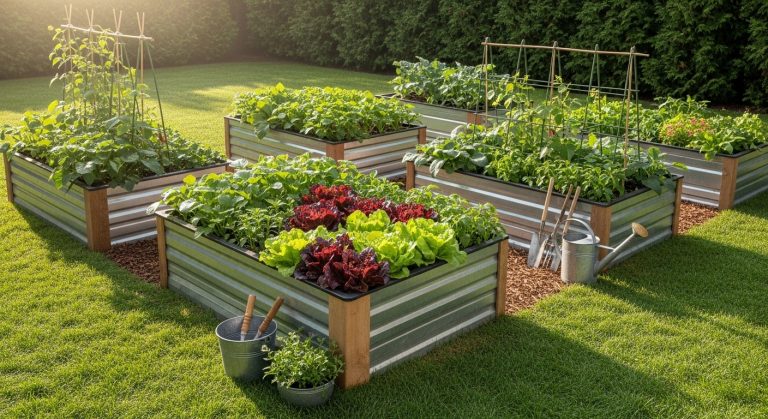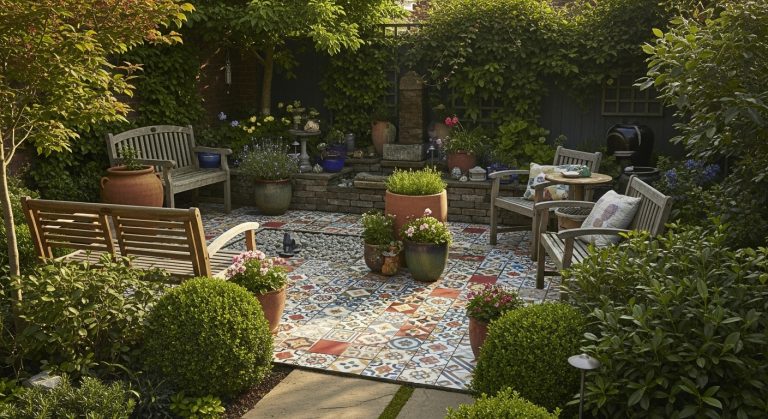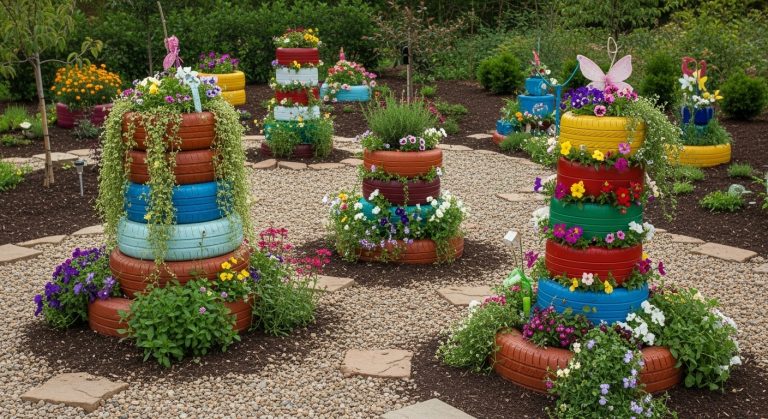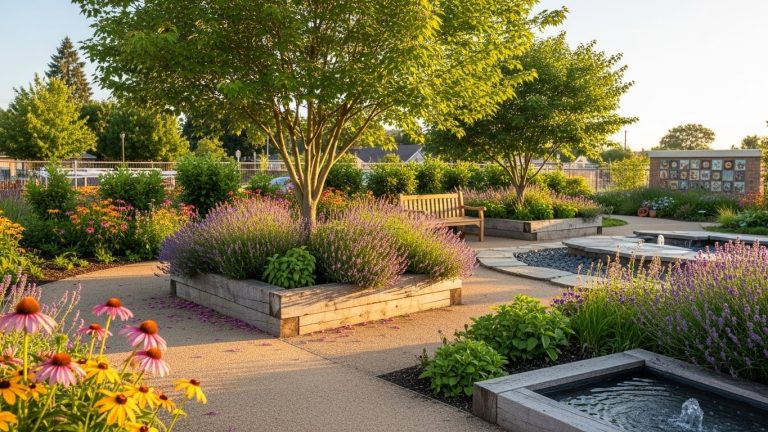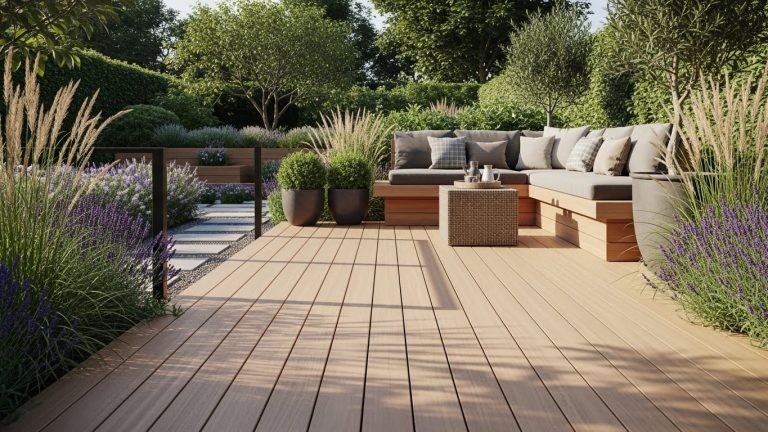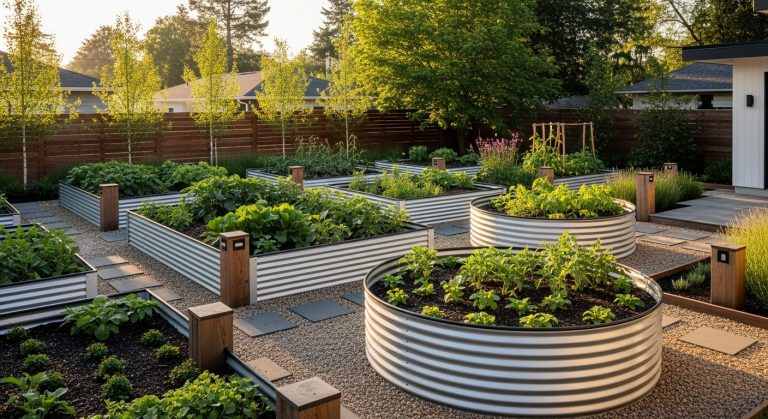15 Brilliant Kitchen Herb Garden Indoor Ideas to Grow Fresh Flavor Year-Round
Ever walked into your kitchen and thought, “I wish I could just snip fresh basil right now”? You’re not alone. The dream of having a kitchen herb garden indoors is irresistible — fresh mint for tea, parsley for garnish, and rosemary for that Sunday roast, all within arm’s reach.
Indoor herb gardens bring more than flavor; they bring life into the kitchen. They add color, texture, fragrance, and a sense of calm to your cooking space. Whether you live in a city apartment with zero outdoor space or just want to elevate your culinary game, a small indoor herb setup can completely transform your daily cooking routine.
In this guide, we’ll explore 15 inspiring kitchen herb garden indoor ideas that suit every home, budget, and level of experience — from minimalist setups to creative DIY displays. Let’s dig in (pun intended).
1. Windowsill Herb Strip
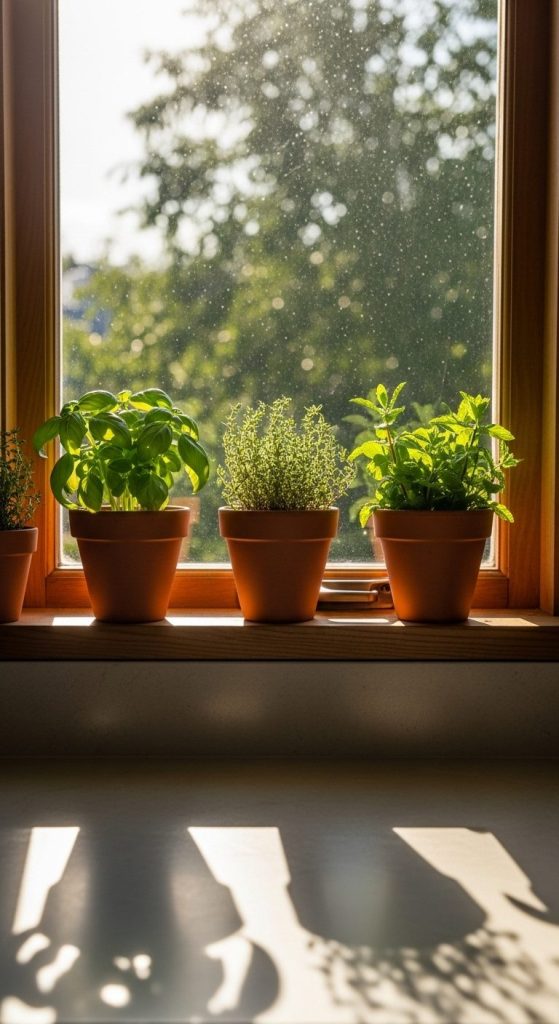
The simplest way to start your indoor herb adventure? Use that sunny windowsill you’ve probably ignored for years. A line of small pots filled with herbs like basil, thyme, or mint instantly livens up the view and your meals.
Pros:
- Excellent sunlight — most herbs love direct light.
- Super convenient while cooking.
- Adds fresh color and fragrance to your kitchen.
Cons:
- Limited space for larger pots.
- Needs enough sunlight exposure.
Takeaway:
If you’ve got a bright window, your sill is prime real estate for an effortless, low-maintenance herb garden.
2. Hanging Pots or Rail Planters

Want to save counter space while keeping herbs within reach? Hang them! Install a rod or rail above your sink or counter and suspend small pots of herbs from it.
Pros:
- Saves space — ideal for small kitchens.
- Adds visual interest with hanging greenery.
- Keeps herbs accessible but out of the way.
Cons:
- Requires sturdy installation.
- Some herbs may get uneven light exposure.
Takeaway:
This is one of the most stylish kitchen herb garden indoor ideas, especially if you love a rustic or Scandinavian aesthetic.
3. Countertop Modular Herb Tray

Turn your countertop into a living spice rack with a modular herb tray. Use small pots or divided trays to grow multiple herbs together.
Pros:
- Organized and tidy appearance.
- Easy to replace or rotate herbs.
- Practical for everyday cooking.
Cons:
- Takes up counter space.
- May require extra lighting if away from a window.
Takeaway:
Perfect for dedicated home cooks — it makes herbs part of your kitchen workflow.
4. Under-Cabinet LED Grow Strip
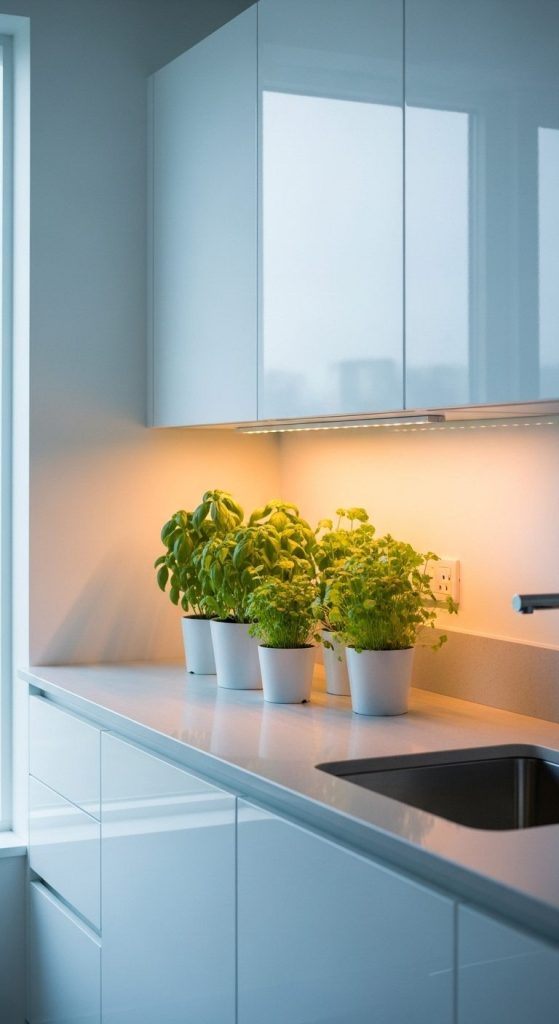
No sunlight? No problem. Install slim LED grow lights under your cabinets, and watch your herbs thrive no matter the season.
Pros:
- Provides consistent light year-round.
- Great for low-light kitchens.
- Makes herb care almost foolproof.
Cons:
- Initial setup cost.
- Cool light may not match your kitchen’s warm ambiance.
Takeaway:
This idea turns any dim corner into a productive indoor herb station.
5. Window-Box Style Outdoor Shelf

If your kitchen window faces outside, mount a small box or shelf just beyond the glass — accessible through the window for easy harvesting.
Pros:
- Herbs get natural sunlight and airflow.
- Adds charm to your exterior view.
- Keeps kitchen space clutter-free.
Cons:
- Requires outdoor installation.
- Can be tricky to access during bad weather.
Takeaway:
A brilliant hybrid setup for those who want the best of both worlds — indoor convenience and outdoor growth.
6. Vertical Wall Herb Panel
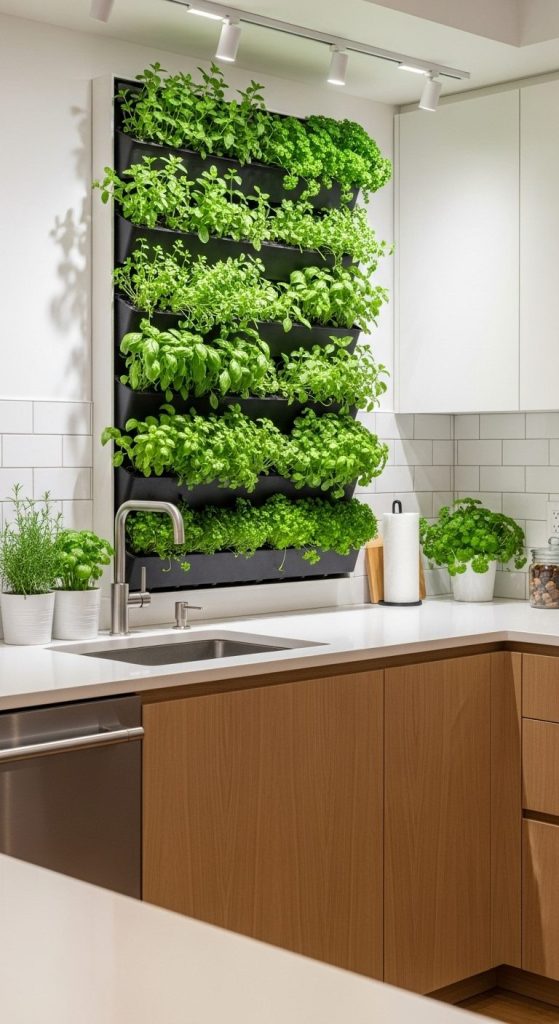
Got an empty wall? Turn it into a living, edible art piece with a vertical herb garden panel.
Pros:
- Maximizes vertical space.
- Looks beautiful and lush.
- Encourages diverse herb varieties.
Cons:
- May need a drip tray to prevent wall damage.
- Watering can be a bit more complex.
Takeaway:
When floor space is limited, go vertical — it’s a show-stopper and space-saver in one.
7. Pull-Out Herb Drawer
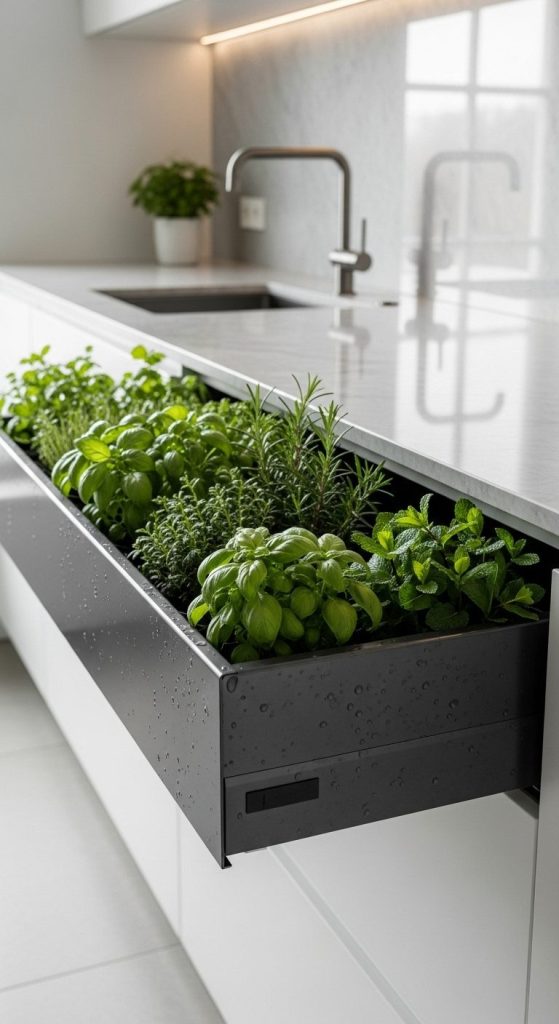
Imagine opening a drawer and being greeted by rows of green, fragrant herbs. A built-in pull-out garden under your counter is both clever and elegant.
Pros:
- Hidden yet accessible.
- Keeps countertops clear.
- Helps maintain humidity levels.
Cons:
- Requires custom cabinetry.
- Needs good ventilation and light source.
Takeaway:
For design lovers who value minimalism, this sleek solution keeps your herbs organized and discreet.
8. Tiered Herb Stand
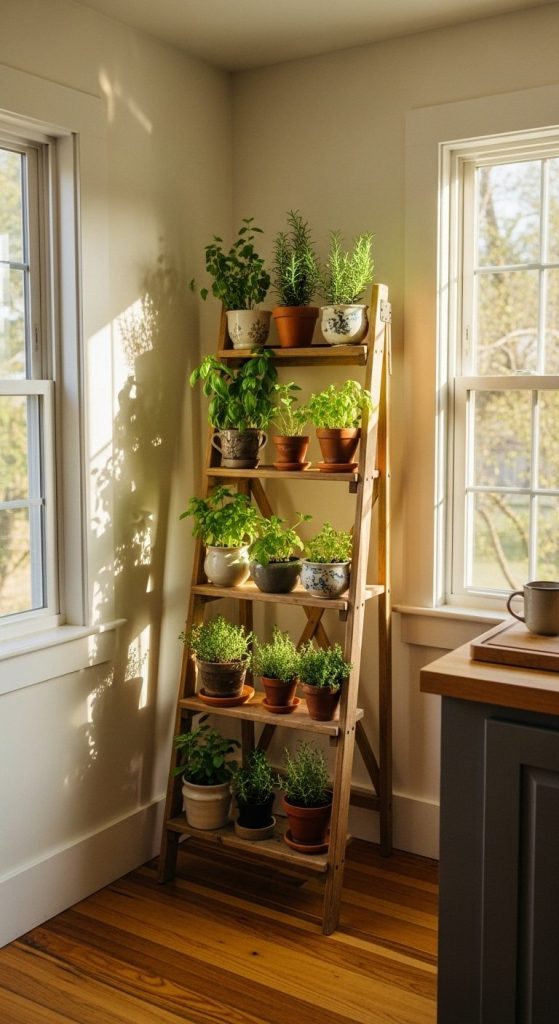
A vertical or ladder-style stand can fit in small kitchen corners and host multiple herb pots.
Pros:
- Holds many herbs in minimal space.
- Easy to move or reposition.
- Adds depth and texture to your kitchen décor.
Cons:
- Lower tiers may get less light.
- Can take up floor space.
Takeaway:
Perfect balance of beauty and practicality — a must for herb enthusiasts who want a mini indoor “green tower.”
9. Mini Greenhouse or Cloche
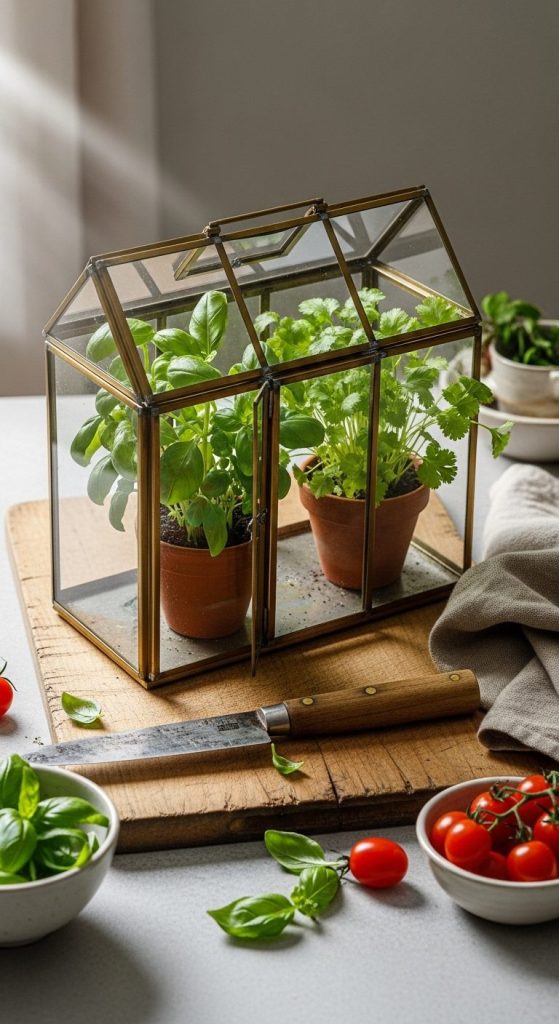
Create your own tiny indoor greenhouse on a windowsill or counter to give herbs a controlled environment.
Pros:
- Retains warmth and humidity for delicate herbs.
- Looks decorative and unique.
- Keeps pests away.
Cons:
- May overheat under strong sunlight.
- Limited space inside.
Takeaway:
Ideal for sensitive herbs like basil or coriander — elegant, functional, and low-maintenance.
10. Window Rack + Hanging Combo
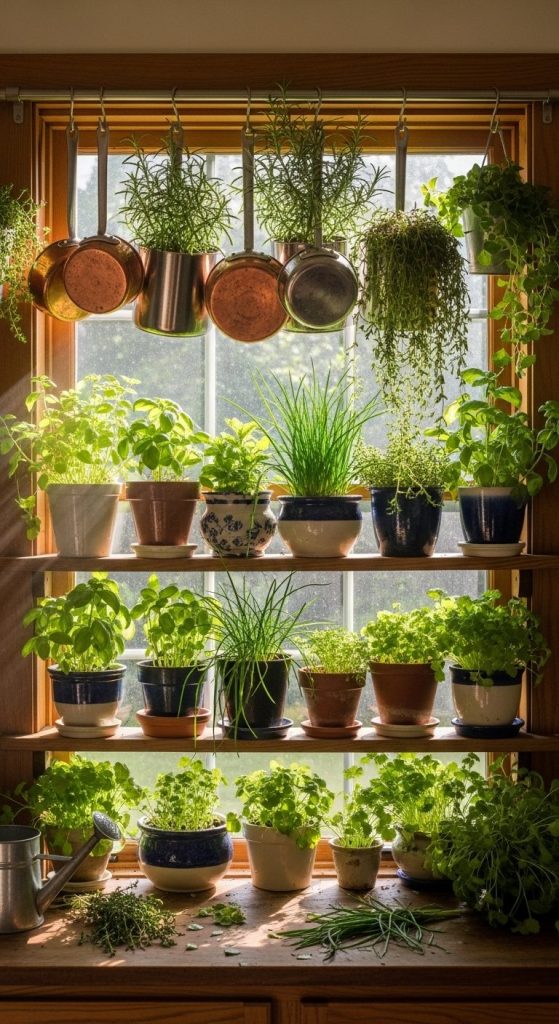
Combine shelves and hanging planters around a window for a layered, dynamic look.
Pros:
- Doubles your growing space.
- Creates a lush, green focal point.
- Herbs get plenty of sunlight.
Cons:
- Can block natural light if overdone.
- Slightly trickier watering routine.
Takeaway:
For maximalists — the more greenery, the better! This setup feels immersive and alive.
11. Hydroponic Smart Garden
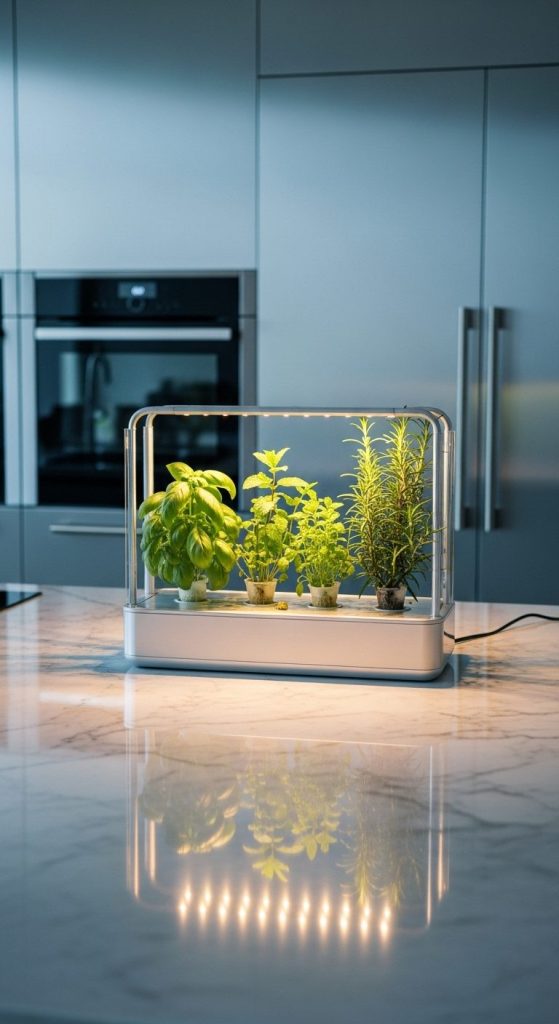
For tech lovers, hydroponic herb gardens are a game-changer. These systems automate watering, lighting, and nutrients — herbs practically grow themselves.
Pros:
- Low maintenance.
- Works without soil (no mess!).
- Great results even in dark kitchens.
Cons:
- Can be expensive initially.
- Limited to specific plant pods.
Takeaway:
If you want effortless, consistent results, a smart hydroponic system is your modern kitchen’s best friend.
12. Herb Basket Centerpiece
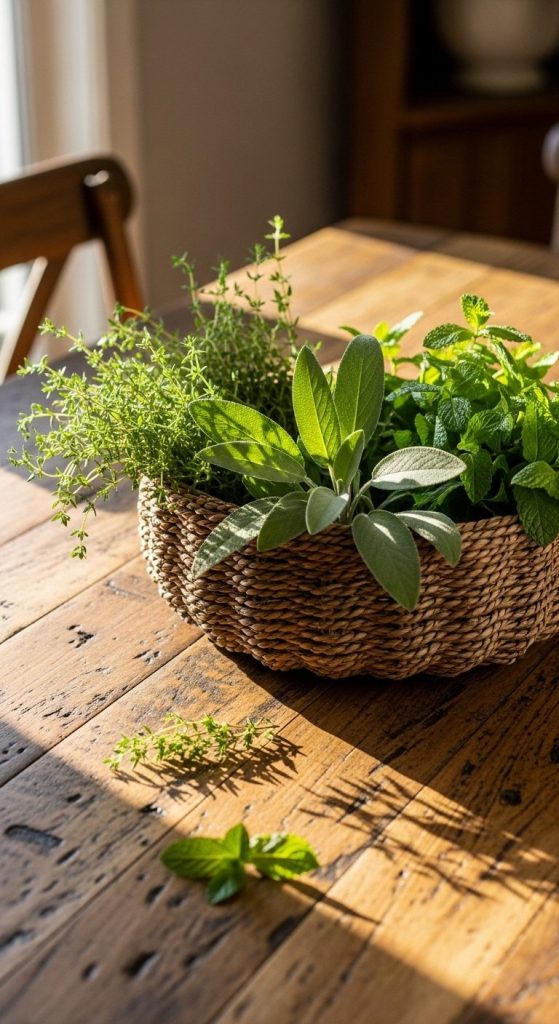
A rustic basket of herbs on your kitchen or dining table adds charm and utility — you can literally pluck herbs mid-meal.
Pros:
- Portable and decorative.
- Encourages regular use.
- Great conversation starter.
Cons:
- May take up table space.
- Needs frequent light exposure.
Takeaway:
A perfect mix of form and function — your table becomes both centerpiece and garden.
13. Shelf Above Refrigerator or Appliances
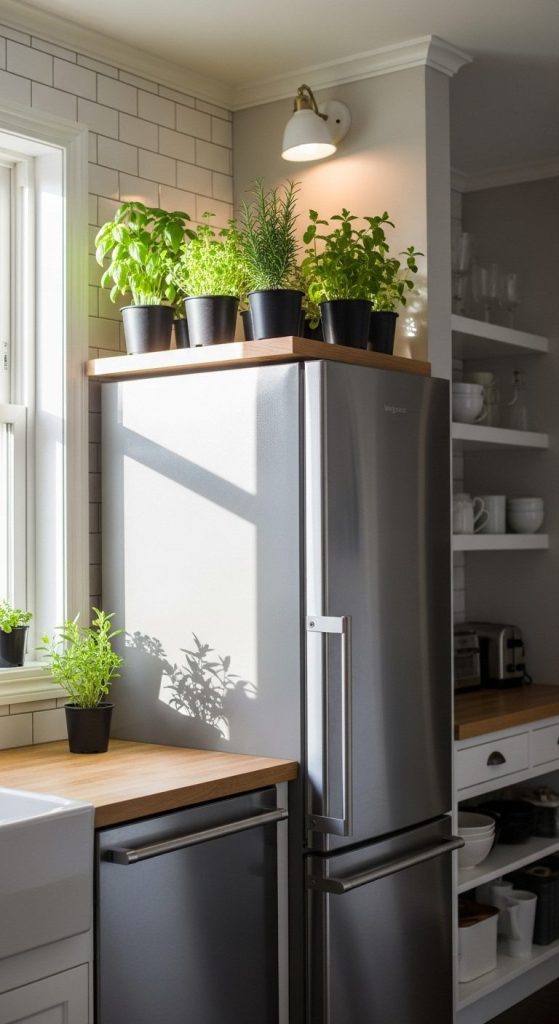
Use forgotten vertical space! Install a narrow shelf above your refrigerator or microwave to display hardy herbs.
Pros:
- Clever use of unused space.
- Adds greenery to eye level.
- Warm air helps certain herbs thrive.
Cons:
- Harder to reach for watering.
- Heat can stress delicate plants.
Takeaway:
An efficient way to grow herbs if you’re short on counter or floor space.
14. Window Bench with Built-In Planters
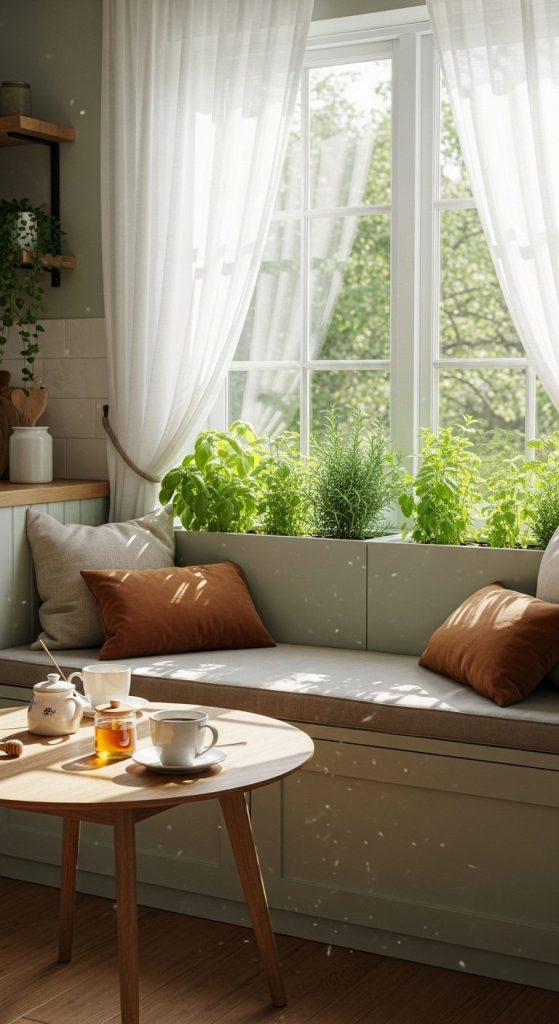
If you’ve got the room, design a bench near your kitchen window with planters built into the sides.
Pros:
- Functional and cozy.
- Allows for a wide range of herbs.
- Creates a stunning visual focal point.
Cons:
- Needs more space and design planning.
- Slightly higher maintenance.
Takeaway:
It’s a luxurious but achievable idea — blending comfort, light, and greenery in one inviting corner.
15. Seasonal Herb Rotation System

Rotate your herbs every few months to match the seasons — basil and mint in summer, rosemary and thyme in winter.
Pros:
- Keeps things fresh and seasonal.
- Lets you experiment with new flavors.
- Maintains long-term soil health.
Cons:
- Requires regular replanting.
- Some herbs may not adapt quickly indoors.
Takeaway:
Change keeps your indoor garden exciting — each season brings new aromas and flavors.
Conclusion
There you have it — 15 kitchen herb garden indoor ideas that prove you don’t need a backyard to grow fresh, flavorful herbs. Whether it’s a sunny windowsill, a vertical wall panel, or a smart hydroponic kit, every setup adds something special: freshness, beauty, and a deeper connection to your food.
Personally, the joy comes not from the fancy pots or grow lights but from using the herbs — snipping, smelling, tasting, and watching them thrive. Even one thriving basil plant can make your kitchen feel alive.
So choose one idea that fits your space and lifestyle. Start small, stay consistent, and let your kitchen become a living, breathing space where flavor and greenery coexist beautifully.

Ashley Ellison is a skilled writer and avid bowler. Her passion for storytelling and dedication to the sport have led her to participate in various national bowling leagues. With a unique combination of talents, Ashley approaches every challenge with creativity and a relentless drive to succeed.

